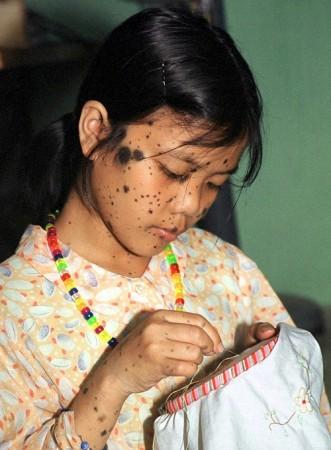
Moles on the skin may predict risk of skin cancer. This was the conclusion reached by a large study conducted on more than ten million people.
Moles are small brownish spots found on the skin. They are formed when melanocytes, the pigment cells that give skin its colour, cluster together.
A team of researchers from Universities of Oxford (UK), Melbourne and Epworth HealthCare (Australia) found that possessing moles nearly quadrupled a person's risk of getting skin cancer melanoma. Melanoma is a cancer that starts in the cells that produce the melanin pigment.
The study looked at about 10,402,073 people. Researchers used medical records from hospitals to find out the total number of people having moles. At least 271,656 people had moles on skins.
The study results showed a direct link between moles on the skin and melanoma. People with moles on the skin had 4.6 times higher risk of developing skin cancer than people without any moles.
"Our results show patients with a hospital diagnosis of moles, have a high risk of developing melanoma both around the site of the mole and elsewhere on the body. These people might, therefore, benefit from increased surveillance," Professor Rodney Sinclair, Professor of Medicine at the University of Melbourne and Director of Dermatology at Epworth HealthCare said in a news release.
The risks were high on those who had moles on the trunk than any other part of the body. "We found that the increase was greater when the mole was at the same site as the melanoma – people with moles on their trunk were nine times more likely to develop melanoma on the trunk, and 5.6 times more likely to develop melanoma elsewhere on the body," Sinclair, said.
Though several studies in the past have shown similar risk associated with moles, an online research into the matter shows that in most of the cases, moles are harmless and people should seek medical help only on noticing visible changes in its size or colour.
Research published earlier has shown a link between the total number of moles a woman possessed and breast cancer.
Having 10 to 40 moles on the skin is quite normal and people should start worrying only when a mole starts to grow; bleed or itch, according to experts from the American Academy of Dermatology. However, these symptoms are not always applicable for children as moles normally develop and grow within 30 years of birth. Moles can also grow or change colours along with a child's growth.
Experts at AIM at Melanoma, an organization dedicated for melanoma research, said that more number of moles can increase cancer risk. Having 51 to 100 moles, according to them, can increase the risk by 3.7 times while more than 100 moles can escalate the risk by 7.6 times.








